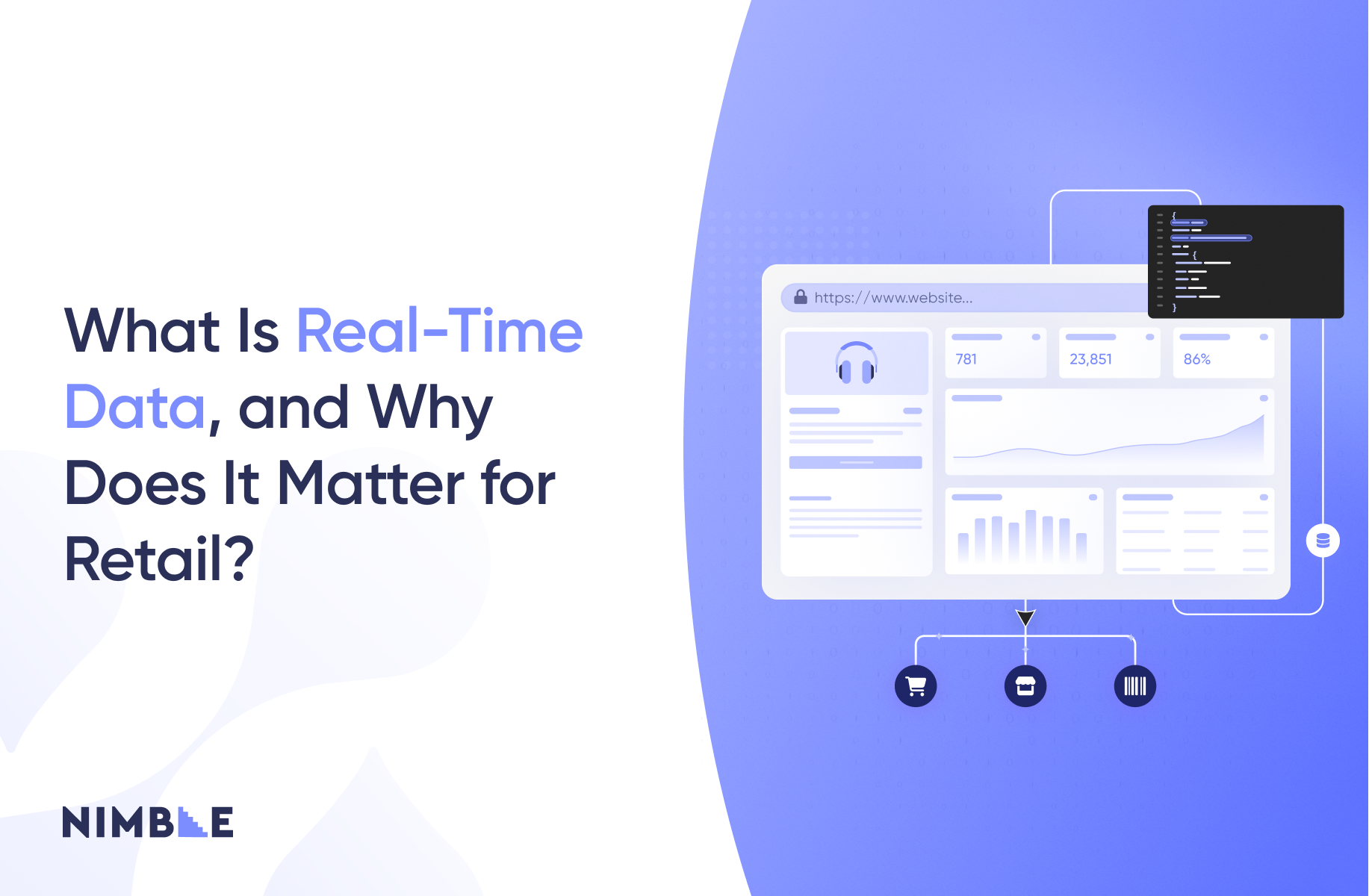Dataset vs. Database - All The Differences


In our data-based world, understanding the difference between a dataset and a database is key to leveraging data effectively. This article demystifies these terms, highlighting their unique roles and impacts in data-driven decision-making. Whether you're a business professional or a data enthusiast, join us in exploring the nuances of datasets and databases, and how they shape the world of data management.
Understanding Datasets
A dataset is essentially a collection of data. Imagine it like a spreadsheet filled with numbers, words, and figures. It's a static snapshot of information, often organized in a way that's easy to analyze and understand. Whether it's sales numbers, customer feedback, or any other type of data, a dataset organizes this information into a format that's useful for specific purposes. Datasets are often the final result of web sscraping, after the data has been collected by a powerful web API and arranged in the desired way.
Key Characteristics of Datasets
Datasets, integral in various fields ranging from business analytics to academic research, are defined by specific features that set them apart from other forms of data management tools, like databases. These characteristics not only dictate how datasets are structured and utilized but also influence the kind of insights they can provide. Let’s explore these key traits to better comprehend how datasets function and how they can be applied in practical scenarios.
Organized Structure: Rows and Columns
The table-like structure of datasets, with their rows and columns, is fundamental for organizing data in a clear, logical manner. This format allows for efficient sorting, filtering, and analysis, making it easier to identify patterns, outliers, or specific data points. For example, in a sales dataset, you can quickly compare sales figures across different regions or periods, facilitating a comprehensive analysis of sales performance.
Topic-Specific Focus
The focused nature of datasets means they can be tailored to specific research needs or business questions. For instance, a dataset focusing on customer satisfaction can provide detailed insights into customer preferences and behaviors, which can be pivotal for marketing strategies and product development. This specificity ensures that the data is highly relevant and can lead to more accurate and actionable conclusions.
Static Nature
A dataset's static nature is particularly useful for historical comparisons and trend analysis. For instance, by analyzing sales data from previous years, a business can identify seasonal trends and plan inventory accordingly. This ability to capture and analyze data over specific timeframes makes datasets invaluable tools for strategic planning and forecasting.
Uses of Datasets in Business
In the dynamic landscape of business, datasets emerge as a powerhouse of insights, driving critical decision-making and strategic planning. Their multifaceted applications span various domains, each unlocking a new perspective in understanding and navigating the market. Here's a deeper dive into the diverse uses of datasets in business, enriched with specific examples that illustrate their practical impact.
Decision-Making and Trend Analysis
In each of these cases, datasets serve as the foundation for informed decision-making. By examining historical data, businesses can uncover patterns and trends that guide strategic choices, ensuring decisions are data-driven and not just based on intuition.
Historical Data for Strategy Development
These examples show how datasets allow businesses to reflect on their past operations. By understanding what worked and what didn’t, companies can build more effective strategies and avoid repeating past mistakes.
Identifying Market Trends
In each scenario, datasets are pivotal in recognizing emerging trends in consumer behavior and market demands. This enables businesses to stay ahead of the curve, adapting their products, services, and strategies on time to meet evolving market needs.
The strategic use of datasets in business opens up a world of possibilities, turning raw data into actionable insights. Whether it's refining marketing strategies, optimizing operational efficiency, or predicting future market movements, datasets equip businesses with the tools they need to thrive in a competitive environment.
Understanding Databases
A database is a sophisticated system for storing and managing data. Picture it as a digital library, where vast amounts of diverse data are organized, accessed, and manipulated with efficiency. Unlike a static dataset, a database is dynamic and constantly evolving, allowing for real-time data management and interaction. In today's digital era, databases are pivotal for businesses, powering everything from customer relationship management systems to complex data analytics platforms.
Key Characteristics of Databases
Databases are more than just storage facilities for information; they are dynamic systems crucial for efficient data management in today's digital world. From small businesses to large enterprises, databases form the backbone of many operational processes. Understanding their key characteristics is essential to appreciate how they function and the pivotal role they play in various industries.
Let's jump into these defining features of databases, shedding light on their structure, capabilities, and the value they bring to business operations.
Structured and Organized Data Management Databases
offer a highly structured environment for data, using tables, records, and fields to organize information systematically. This structure allows for powerful data manipulation and retrieval capabilities, enabling businesses to access and update their data with precision and speed.
Dynamic and Real-Time Data Interaction
Unlike datasets, databases are dynamic. They are designed to handle ongoing data input, updates, and retrieval, offering real-time interaction with data. This makes them ideal for applications that require continuous data access and modification, such as e-commerce platforms or inventory management systems.
Advanced Data Security and Integrity
Databases provide robust security features to protect sensitive information. They employ various measures like user authentication, access controls, and encryption to ensure data integrity and prevent unauthorized access.
Uses of Databases in Business
Databases are the engines that drive business operations, supporting a range of activities from transaction processing to analytics. Their versatility makes them indispensable in the modern business landscape.
Supporting Daily Business Operations
In these cases, databases enable businesses to manage their core operations effectively, ensuring data accuracy, and accessibility at all times.
Enhancing Customer Relationship Management
These examples illustrate how databases are essential in building and maintaining strong customer relationships, offering personalized experiences based on detailed customer data.
Facilitating Data Analytics and Reporting
In each of these scenarios, databases provide the foundational layer for in-depth analytics and reporting, enabling businesses to make data-driven decisions and stay competitive in their respective fields.
The strategic implementation of databases in business operations transforms the way organizations handle their data, offering enhanced efficiency, security, and analytical capabilities. From managing day-to-day operations to enabling sophisticated data analytics, databases are integral in driving business success in the digital age.
Comparing Dataset and Database
In the complex world of data management, distinguishing between datasets and databases is crucial. Each serves unique purposes and possesses distinct characteristics that are vital to understand for their effective application. This comparative analysis will highlight their differences in terms of purpose, structure, business usage, flexibility, scalability, and security.
Purpose and Application
Dataset:
- Used mainly for analysis, research, and static reporting.
- Ideal for tasks needing a fixed data snapshot.
Database:
- Serves dynamic data storage and management needs.
- Crucial for continuous data interaction, like transaction processing.
Structural Differences
Dataset:
- Structured as tables with rows and columns.
- Focus on specific subjects.
- Static nature.
Database:
- Complex structure with tables and relationships.
- Handles diverse data types.
- Dynamic, supporting continuous updates.
Usage in Business
Dataset:
- Market Analysis: Analyzing sales data for consumer trends.
- Financial Reporting: Creating reports from historical data.
Database:
- CRM: Managing ongoing customer interactions.
- Inventory Management: Real-time tracking of stock levels.
Flexibility and Dynamics
Dataset:
- Limited flexibility, suited for specific analyses.
- Static, ideal for time-based comparisons.
Database:
- Highly flexible and adaptable to various needs.
- Dynamic, allowing real-time updates and interactions.
Scalability and Adaptability
Dataset:
- Fixed scope and size, limited scalability.
- Less suited for evolving data needs.
Database:
- Highly scalable with business growth.
- Accommodates increasing data and complexity.
Security and Accessibility
Dataset:
- Basic security measures.
- Limited access, typically for analysis.
Database:
- Advanced security features like encryption and access control.
- Multi-user access with varied permissions.
By understanding these differences, businesses and data professionals can make informed decisions about which tool is best suited for their specific data needs and objectives. Whether it’s the static, focused analysis of datasets or the dynamic, scalable nature of databases, each has its place in the data-driven landscape of modern business.
Conclusion
In summary, understanding datasets and databases is key for effective data management. Datasets offer static snapshots for analysis, while databases handle dynamic data for ongoing management. For those seeking practical solutions in web data extraction and use, Nimble is your go-to. Whether you're a developer or part of a data team with no coding background, Nimble provides easy-to-use, powerful tools for web scraping (including E-commerce) and ready-to-use datasets.
Simplify your data process with Nimble, and transform web data into actionable insights effortlessly, propelling your business forward.
FAQ
Answers to frequently asked questions



















